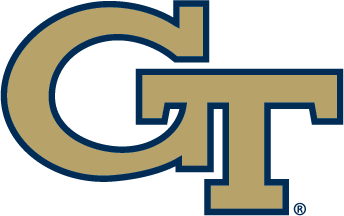June 17, 2016
By Matt Winkeljohn | The Good Word – Every varsity sport at Georgia Tech is unique, but all 17 programs now share the same playbook as athletic director Mike Bobinski has rolled out an Athletics Strategic Plan to help guide each student-athlete, coach and staff member from the football team to academic counselors to trainers, facility managers and more.
The plan, formally distributed to the Georgia Tech Athletic Association Board of Trustees at Thursday’s quarterly board meeting, is wide-ranging and detailed, yet the primary goals are simple: to provide direction for the department’s objectives while helping each of Georgia Tech’s varsity programs reach their potential. Ultimately the plan is intended to help create the best possible opportunities for student-athletes to excel on fields of play and in the classroom, and to give Yellow Jackets’ fans a first-class product to support.
After some 15 months and more than a hundred highly-collaborative meetings between more than 60 student-athletes, coaches, staffers and support employees there is a single doctrine to guide all in the Georgia Tech Athletic Association.
For more than a year after Bobinski was hired in 2013, he observed everything within the GTAA. He concluded that while Tech is remarkably unique with its combination of a highly competitive academics and sports programs, the Jackets weren’t capitalizing on all their assets and performing at a level he thought they were capable of.
There were plenty of dedicated staffers who were working hard at their jobs, but not looking beyond their own silos at the bigger picture. Simply put, there was too much independence among teams and staffers. Frequently, Bobinski said, he noticed too much operation within vacuums.
“One of the consistent themes was that we were an organization that contained a lot of really hard-working and well-intentioned people who weren’t aligned,” he said. “There wasn’t a recognition that we have an opportunity to be a whole lot better if we work with and for each other, and we weren’t leveraging our collective strengths. And the other main areas for improvement were communication and clarity.”
Early in 2015, Bobinski tasked the GTAA with distilling many visions into one constitution. Deputy director of athletics Brett Daniels and human resources business partner Lee Hendrickson helmed the project with guidance from Georgia Tech Strategic Consulting’s Terry Carnes and Andrew Billing.
In simple terms, the Strategic Plan is an expanded mission statement. It starts, in fact, with a mission statement: Georgia Tech Athletics inspires and empowers student-athletes to be champions in academics, competition, and life.
The plan establishes core values of teamwork, character, excellence and innovation that are to be bedrock guiding principles toward ensuring that Tech athletics set the highest standards. The Strategic Plan blossoms from there, targeting five specific priority areas of emphasis. Within each are outlines of specific goals to achieve those ends.
“With our key priorities, obviously it started with academics.” Daniels said. “That’s first and foremost why we’re here. Close behind is athletic excellence because as Mike says, `We’re here to win.’ “Third was student-athlete experience. What are we doing outside the classroom and away from competitive fields? What are we doing to make sure they have a good time? Being in college is supposed to be fun; let’s not lose sight of that.
“Our fourth priority is culture, and this turns to our staff. We want to make sure we create a culture of compliance and collaboration. That was probably one of the biggest things Mike stressed, getting our people to work together more. The final priority area was community and what are we doing to reach across campus and beyond with our branding, game-day experience and into to community. What are we doing beyond our walls?”
After exchanging ideas initially in universal meetings that included representation from every nook and cranny in the AA, the consortium broke into 13 “goal groups,” spread over the five priority areas. Each set out to forward micro-mission statements that would fold into a master plan for the entire athletic department.
Softball player Samantha Pierannunzi, a rising senior in the “competitive excellence” goal group, and others noted that there is at times a difference in the way Tech’s athletic programs recruit.
Daniels, like Bobinski and Perannunzi, noted that many programs were operating with so much independence as to not be aware of tools available to them that perhaps other programs were using. For example, while there is a graphics designer on the GTAA staff, some staffers seemed to believe he was only available to help design game-day programs and slick brochures for football recruiting.
Similarly, Pierannunzi suggests that the Jackets can do more to make known to the world — especially recruits — what Tech is about.
In a group that included Pierannunzi’s head coach, Shelly Hoerner, golf coach Bruce Heppler, men’s tennis coach Kenny Thorne, associate athletic director Phyllis LaBaw and others, she said that she wants more people to know how special Georgia Tech is, and to better understand the value of a Tech degree.
“We kept talking about the impact of marketing and the way we brand ourselves … and how it impacts recruiting and retaining student-athletes,” Pierannunzi said. “We have the top academic program that you could ever want to go to, we compete in a Power 5 conference, and we’re going to go off and be CEOs and contribute to society.
“If we can market that and show off student-athletes that are well rounded … the more kids that you can introduce to that brand on social media and give a grasp of how important it is to us, the more they’re going to want to be part of it.”
Pierannunzi is acting on her thoughts.
She’s working to create an internship program at Tech that will enlist members of the general student body — one at a time — to serve as social media representatives for each sport in exchange for credit hours. There is hope the program will launch in January, 2017.
Student-athletes from all programs participated, and Bobinski said that senior baseball player Jonathan King was especially helpful, and he noted that women’s basketball player Katrina Vuckovic, a senior from Serbia, was outstanding as one of the SA international representatives.
“We made it available to a lot of folks,” Bobinski said of student-athlete participation. “We selected people by design from high-expectation sports and others. We really did try to do it to hear from a lot of voices.”
Volleyball player London Ackermann also participated in the buildup of the Strategic Plan, and the rising senior believes the cross-pollination of team strategies within the GTAA can help all programs.
“The whole communication aspect is important. How [football head coach] Paul Johnson can help [volleyball coach] Michelle Collier, what he does that might influence a volleyball [recruit] . . . she might want to meet Paul Johnson,” said Ackermann. “We heard from a lot of people we don’t hear from a lot.”
Heppler’s had a few things to say in 21 years on the Flats, as the golf team has won or shared 11 ACC titles in his tenure. His greatest input was basic as can be when he said what you put in is what you get out; Tech is special, and it takes special people to make it work at peak efficiency.
He said it is critical to seek student-athletes who can compete at extremely high levels — first in the classroom.
“A lot of my thoughts were on recruiting. If they consider I’ve been reasonably successful, haven’t had a lot of transfers or a lot of losses,” said the eight-time ACC Coach of the Year. “Part of it is my sport, but we’ve also done a really good job of finding kids who should be at Georgia Tech.
“I’ve walked away from highly talented guys who didn’t fit. The rigors are there; you can’t avoid them. It’s, `I’ve got my school side handled . . . now, I can do my sport.’ The worst thing is for us to be at a tournament with three exams to come back to that he’s not ready for; he will not play well.”
While the Strategic Plan was being formed, elements were presented to an outside board for consideration. A group of alumni and faculty members were consulted to help streamline the visions that became a singular plan.
“They would ask us some very pointed questions,” Daniels said. “They wanted to make sure we connected our plan with the ideas included in the Institute’s plan. For example, with innovation, they wanted us to make sure we emphasized using the athletic arm for research and development to connect with ideas being developed across campus.”
Georgia Tech’s new Athletic Strategic Plan also will help create new monitoring standards so that coaches and staffers can measure and evaluate themselves. Heppler also believes the highly inclusive approach to building this plan benefitted everyone in the GTAA.
“To completely pull back all the walls and windows when you’re building something, I think it was good,” he said. “I think it was a good process, and involved everybody. If you wanted to have a voice, you could have a voice. If you don’t give people an opportunity to have some input no matter their level, I think they become disenchanted. It’s good for morale.”
With sharpened focus on teamwork, character, excellence and innovation, the Georgia Tech Strategic Plan will give student-athletes, coaches and all GTAA staffers a more united vision, better opportunities to achieve success and greater methods of measuring themselves along the way.
“That’s exactly what I said to one of our boards,” Bobinski said. “There was not a benchmark. It was, `Was that good enough? Based on what?’
“Everybody in all walks of life wants to know what’s expected of them. This is us raising our level of professionalism.
“If nobody explains what’s expected of you, you just go about doing whatever you think is expected. I think the key for us is to make sure we don’t lose sight of our plans. We need to not let it slip away from our everyday consciousness. This is about the student-athletes, and I hope that they will see a changed approach.”









